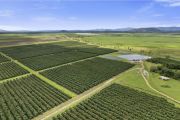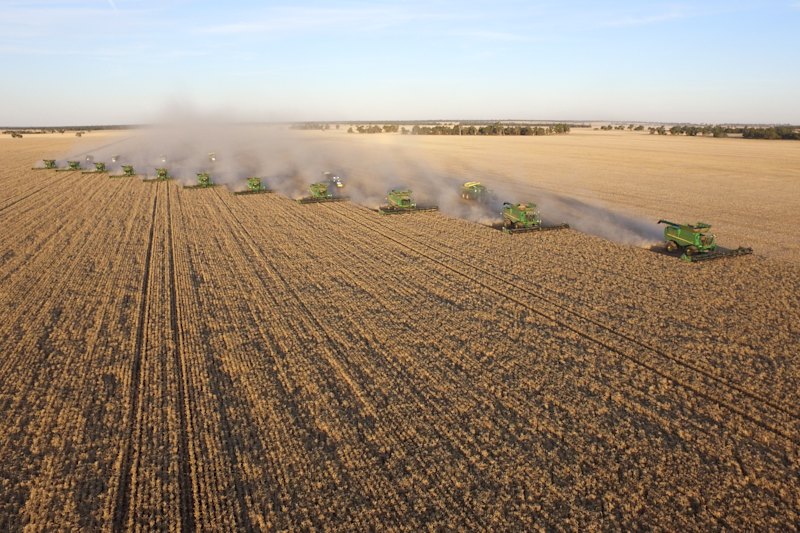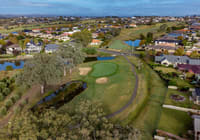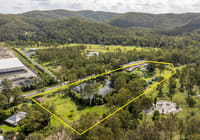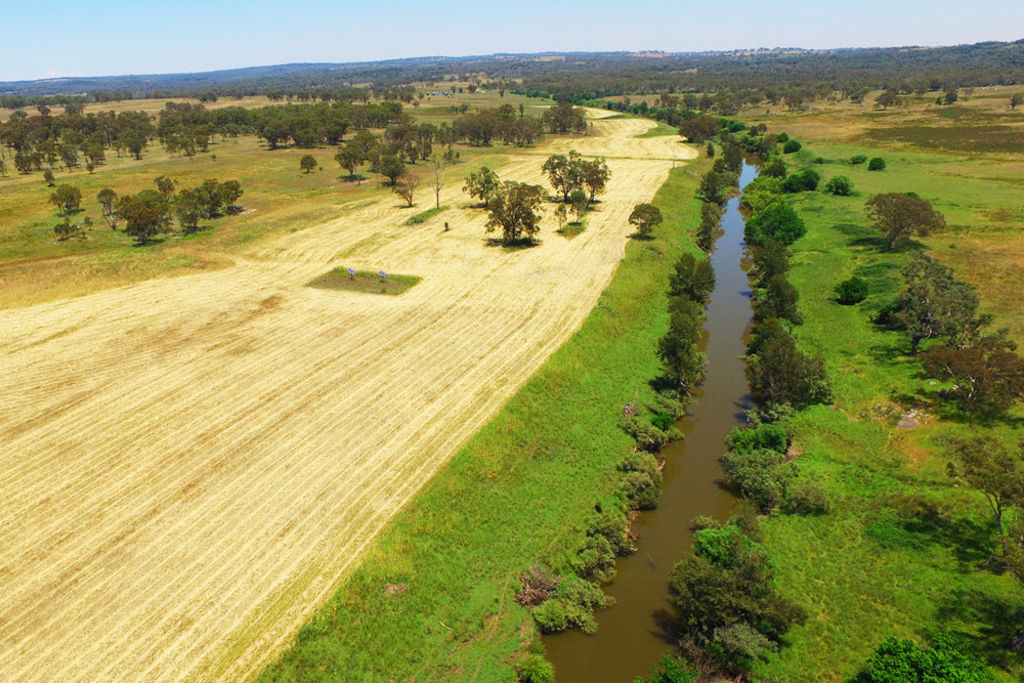
How water is driving the value of Australian farms
Access to water is becoming an increasingly critical driver of the value of Australia’s farms, as rainfall patterns change and the government buys back water licenses for environment projects.
While industry experts say there are many factors that contribute to the price of rural land, having access to water especially through reliable rainfall is becoming more important for buyers.
For example, in one part of the country, land prices are up to four times higher in areas of good and dependable rainfall than in those with much less access to water, one expert says.
“There’s a big trend towards people loving the security of rain and rainfall, particularly the international corporate farms and the bigger family holdings,” says Daniel McCulloch of Ruralco Property Davidson Cameron & Co.
“For instance in dairy country in Guyra, in northern NSW, where we have higher than average rainfall, grazing land can be $4000 an acre. In country with less rainfall, they might be asking $1000 an acre.”
The rural property market is strong at the moment, with the Rural Bank revealing in its latest report that the median price in most states recorded an average annual growth rate of 3 per cent over the decade.
But at the same time, the nation’s level of rainfall is growing more volatile, with the CSIRO and the Bureau of Meteorology reporting that our climate is continuing to warm with less rainfall in winter, albeit more intense rain when it does come, and the Federal Government is taking back more water from the agricultural sector for environmental projects.
That decreasing availability of water in most regions does impact rural prices by varying amounts, according to the season, the drought cycle, and forecasts for the future.
“That also depends on the area, and the different levels of rainfall in different areas,” says Tim Phelps, general manager of water brokers Wilks Water. “In the Riverina, for example, there’s certainly no shortage of water although it has been dry for a period of time, and dam levels are quite low.
“But if we don’t get significant rain this autumn, that will have an impact. As soon as there’s low water supply, the price of water for irrigators increases and affects the Riverina, which is Australia’s food bowl. Then that impacts the price of food, the level of employment and the farms …”
Grazier Blair Smith is currently selling his property at Mossgrove, 35 kilometres north of Inverell, on the Northern Tablelands of NSW because of illness in the family, but knows his price of $4.95 million for more than 3000 hectares reflects the decent rainfall of 756mm (30 inches) a year.
He sees his good access to water as a vital element in the sale, with all his paddocks having water via solar-operated pumps and a good dam system, with the farm remaining well watered, even through the drought of 2013-2014.
“Water is essential for livestock, a very valuable resource and we have no problem at all with it, even though there’s a slight indication that the weather patterns are changing a bit,” said Mr Smith, 77, who’s spent more than 50 years on the property, which is being sold through Rex Daley Realty.
“We’re now seeing a lot of people on the western side of the state making moves to buy properties in this neck of the woods because we’re getting more rainfall and seem less affected by climate change.”
In times of less water, dryland farmers – the majority of farms in Australia who rely on rainfall and dams on their property – are often the hardest hit.
Irrigators, who have access to water via their own water licences traded on the market, simply end up paying higher prices as a result of the fall in supply and rise in demand.
That can be significant too. The price in the early 1990s for water per megalitre stood at $200, says Phil Grahame, general manager of water brokers Ruralco. Today, it can be as high as $4000.
“There’s not as much water around as there was 12 months ago, and we’ve had an unexpectedly dry six months,” he says. “But we’re hoping for an autumn break soon and keen on a wet winter to replenish the dams.
“So properties in irrigated districts where water can be delivered can be worth more than dryland blocks where it’s not possible to deliver water. It’s a demand and supply equation.
“The bigger picture is that there’s growing demand for food but at the same time the Commonwealth has been recovering water for the environment, so there’s less to go into the productive agricultural market.”
A ‘game-changer’
Those high prices for water, the size of licences and the fact that water is now being treated as a commodity that’s being traded on international markets means its cost can be a lot more uncertain. “Water has become a real game-changer,” said Ruralco’s Mr McCulloch.
“Higher rainfall areas are getting more interest than lesser rainfall areas and, while people’s watering systems are getting better, you can’t cart water to stock. That’s a race to the bottom.”
It’s difficult to pin down exactly how much of a farm’s price is dependent on its available water supply, though. While agriculture, on figures from the Department of Agriculture and Water Resources, accounts for about three quarters of the total use of water in Australia, farmland prices are a function of many variables.
These include rainfall, location, agricultural industry, productivity, land quality, sentiment, interest rates, commodity prices and the performance of the wider economy, says agribusiness consultants Anson Advisory.
Different types of farms, of course, require varying levels of water – with cotton and almonds needing far more than other crops for example – and, in areas of good steady rainfall, access to other sources of water will affect the price of a property far less than in areas that receive minimal seasonal rain.
David Nolan of Australian prestige rural property agents Webster Nolan says, for example, that a farm with a river running though it or a creek won’t particularly see any benefit to its price if it’s located somewhere with plentiful rainfall that regularly fills its dams.
“But properties with domestic bores and irrigation bores have become more valuable, whereas years ago bore water was a given,” he says. “But now an irrigation bore licence has the same value as irrigation.
“Water is always a plus, but it’s impossible to put a price on it. There are so many different kinds of farming, and different rainfalls …”
At the same time, farms are learning how to exist using water more efficiently, and sparingly. According to the latest research from the Australian Bureau of Statistics, total water use on Australian farms decreased 3 per cent in 2015-16 to a total of 9.2 million mega litres, down 238,900 mega litres on the previous year.
The volume of water used for irrigation also fell by 3 per cent to 8.4 million mega litres, with the number of businesses irrigating dropping 18 per cent to 22,700 businesses. The biggest falls were in NSW and Victoria (both 21 per cent) driven respectively by sales of water allocations, and a decrease in the area under crop.
But water being drawn from irrigation channels or pipelines still remains the largest source for agricultural purposes, with 34 per cent, or 3.1 million mega litres, coming from this source, compared with 2.4 million mega litres from rivers, creeks or lakes, 2.35 million from groundwater, and 980,000 from dams or tanks.
Moree Real Estate’s Paul Kelly says water accessibility obviously impacts the price of a property but, “it’s hard to put a figure on it. The higher the rainfall, the more the country is worth and rainfall does drive price to a large extent, and is one of the most significant aspects, but there are too many overlying factors to be exact about it. You can’t put a percentage on it.”



